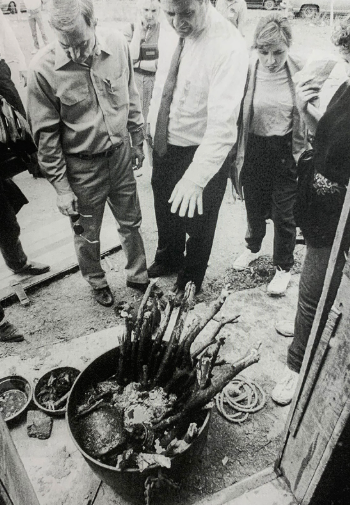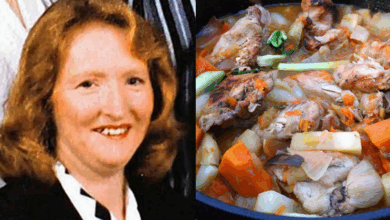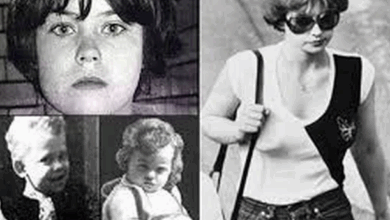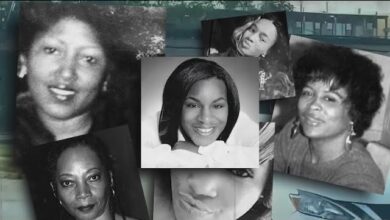The Human Sacrifice of Mark Kilroy: A Spring Break Tragedy

The Human Sacrifice of Mark Kilroy: A Spring Break Tragedy
In the spring of 1989, a gruesome and bewildering crime unfolded near the U.S.–Mexico border that would horrify both nations and reveal a chilling convergence of drug trafficking, cult worship, and ritualistic human sacrifice. The victim was Mark Kilroy, a bright and athletic pre-med student from the University of Texas. His shocking murder by a cult practicing dark rituals in Matamoros, Mexico, became a symbol of the dangers lurking behind seemingly innocent vacation destinations and exposed the twisted beliefs of a narcotics-fueled death cult.
Mark Kilroy: The Promising Young Man
Mark James Kilroy was born on March 5, 1968, in Chicago but was raised in Santa Fe, Texas. He came from a devout Catholic family and was well-liked by peers and teachers. Intelligent and athletic, Kilroy had dreams of becoming a doctor. He was studying at the University of Texas at Austin and was known for his discipline, dedication, and friendly demeanor.
In March 1989, Mark joined three close friends on a spring break trip to South Padre Island, a popular destination for college students looking to relax and unwind before returning to their academic responsibilities. Their trip was filled with typical spring break activities: sunbathing, drinking, and enjoying the beach. On March 13, they decided to cross the border into Mexico, heading into Matamoros for an evening of partying — a decision that would prove fatal.

The Disappearance in Matamoros
That night, after spending several hours in bars and clubs in Matamoros, the group decided to head back to their car, parked near the U.S. border. Along the way, they became separated in the crowd. Mark was last seen by his friends standing near a street corner, just a short distance from the border. Within minutes, he vanished without a trace.
At first, his friends assumed he had returned to the car or wandered off to meet someone. But as hours passed and there was still no sign of him, panic began to set in. They contacted Mexican authorities and later the U.S. Consulate. What began as a missing persons case would soon unravel into one of the most bizarre and horrifying crime stories of the 20th century.
The Cult of Death: Los Narcosatánicos
The investigation into Kilroy’s disappearance initially yielded few leads. However, authorities eventually stumbled upon a major breakthrough — a connection to a drug-smuggling cult operating out of a remote ranch near Matamoros. This cult, known as Los Narcosatánicos (The Narco-Satanists), combined drug trafficking with occult rituals.
The group was led by Adolfo de Jesús Constanzo, a charismatic Cuban-American who had grown up in Miami and became deeply immersed in palo mayombe, an Afro-Caribbean religion involving spiritual rituals. But Constanzo’s interpretation of the religion was perverse and violent. He developed a belief system that fused elements of Santería, Satanism, and blood sacrifice. In his eyes, human offerings would grant protection from law enforcement and increase the power and success of his drug operation.
Constanzo built a following among drug traffickers, corrupt police officers, and disillusioned youth. Together, they formed a powerful and feared cult that operated with impunity in northern Mexico. His right-hand woman, Sara Aldrete, was a Mexican student who served as the group’s “high priestess.” She maintained a dual life, studying at a local university while participating in grisly rituals at the cult’s headquarters.

The Rancho Santa Elena Discovery
As the investigation continued, Mexican police arrested a man running a drug checkpoint near Matamoros who eventually led authorities to the Rancho Santa Elena — the cult’s base of operations. On April 11, 1989, police raided the ranch and were met with an unspeakable scene.
Buried in shallow graves across the property were the mutilated remains of at least 15 people, including Mark Kilroy. His body had been dismembered, his brain removed, and his spine snapped. His killers had used his body as part of a ritual sacrifice, believing his death would imbue them with spiritual power.
In a shack on the property, authorities found an altar filled with blood, bones, and occult symbols — the center of the cult’s rituals. Kilroy had been held captive for hours before his death. Constanzo and his followers believed that sacrificing a young, intelligent, and “pure” man like Kilroy would yield more potent spiritual rewards.
The brutality of the murder shocked the world. Not only had Kilroy been kidnapped, tortured, and killed, but his death had been meticulously planned as part of a supernatural belief system intertwined with narcotrafficking.
The Manhunt and Final Standoff
Following the discovery of the bodies, a massive manhunt began for Adolfo Constanzo and Sara Aldrete. They had fled to Mexico City, where they holed up in an apartment with several cult members. As pressure mounted and authorities closed in, Constanzo became increasingly paranoid.
On May 6, 1989, police raided the apartment. In a final act of control, Constanzo ordered one of his followers to shoot him and another cult member, ending his life to avoid capture. Aldrete, along with other members, was arrested and taken into custody.
Justice and Aftermath
Sara Aldrete and several surviving cult members were tried and convicted for their roles in the murders. Aldrete was sentenced to over 60 years in prison. Although she claimed she was manipulated and feared Constanzo, her active participation in the cult’s activities left little room for leniency.
The murder of Mark Kilroy became a defining case in cross-border crime and the dangers of occult criminal organizations. His parents, devastated by the loss of their only son, became anti-drug crusaders. They established the Mark Kilroy Foundation, which promotes drug awareness and education among youth, ensuring that Mark’s legacy would be one of prevention and hope rather than horror.
The Cultural and Societal Impact
The Kilroy case received intense media coverage and inspired numerous documentaries, films, and books. It also ignited a moral panic about cults and Satanism, particularly in the context of drug trafficking and youth culture. The case blurred the lines between religious extremism, organized crime, and supernatural belief systems, leaving many to question how such atrocities could happen so close to the U.S. border.
It also exposed deep-seated corruption within Mexican law enforcement, as some police officers were found to have been complicit in protecting the cult. In the wake of the scandal, there were increased calls for cross-border cooperation to combat narcotics-related crimes and human trafficking.
Legacy of a Tragedy
Today, the story of Mark Kilroy serves as a sobering reminder of the dark corners that can exist within societies — where desperation, criminal enterprise, and distorted belief systems can converge into unspeakable violence. His case remains one of the most disturbing examples of ritualistic murder in modern history and continues to be studied by criminologists, law enforcement, and scholars interested in the psychology of cults and organized crime.
Despite the tragedy, the Kilroy family has worked tirelessly to find meaning in their loss. Through education and advocacy, they have reached thousands of students, warning them of the dangers of drugs and the importance of making safe choices. Mark’s life, though tragically cut short, continues to have an impact — not through fear, but through awareness and the pursuit of change.





